Salvaging An Abused Brush, or “How To Clean Brushes The Right Way”

For a long time I’ve had this brush kicking around the studio. It was one that a student did not clean properly at a workshop several years ago. I did not really need this brush, I have plenty. Maybe more than plenty, but I do not have a brush problem. I simply possess heightened appreciation about brushes, hence my personal inventory of a couple hundred.
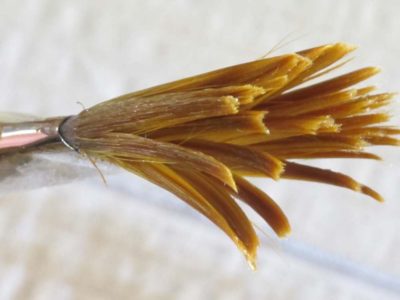
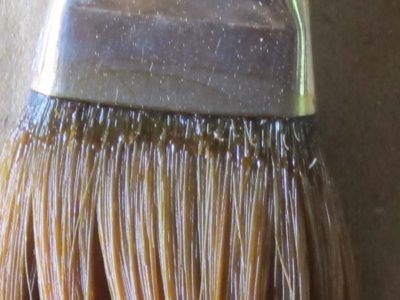
As you can clearly see, the person who cleaned this brush last (or didn’t) left the ferrule with a honking big gob of shellac encrusted within, distorting the bristle bases and rendering the brush .unusable except for applying glue or paint remover. What I wanted to try was reclaiming this damaged tool, especially given that is is not an inexpensive tool. It was probably a $50-75 brush so it was worth a little effort to salvage it. In order to preserve the very fine bristles that make it such an excellent tool I chose the most gentle path possible.
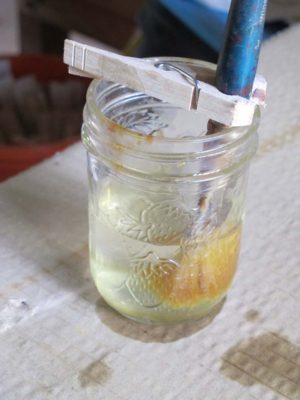
The first thing I did was impale the brush handle in clothespin and then hang it in a jar filled with clean alcohol, making sure the bristle tips were not touching the bottom of the jar. (Is there nothing that a good clothespin cannot help with?)
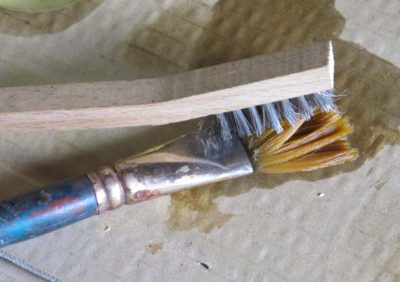
After several days immersed in the alcohol I gently scrubbed the bristles with a wire brush, placing the brush flat on the table and moving the wire brush from the ferrule to the tip of the nylon bristles until the gelatinized resin was removed. I repeated this routine twice more, for a total of six days in the solvent bath. I finally got to the place where I think all the shellac that was going to come out had been removed. I then wrapped the bristles in brown kraft paper and placed two cauls on the outside to establish the new (old?) flat conformation, and let the brush dry under a little bit of weight.
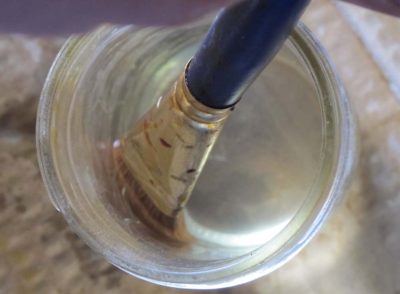
Once the brush was dried and in the right shape I went through the process of cleaning it the way a good, fine brush should be cleaned. Beginning with an inch or so of clean alcohol in the jar I gently flexed the bristles against the side of the jar to get everything saturated and flexible.


Then I placed the brush against the bottom of the jar in such a way that I was bending the bristles rather than pouncing them on the tips, then lifted the brush and rotated it 180 degrees and did the same thing against the jar bottom. Flex the bristles up to the ferrule, leave the tips untouched. Pouncing a brush on its tips to clean it is perhaps the most destructive thing you can do. You are paying a lot for those bristle tips, do not damage them.
I replaced the alcohol and did it one more time just to make sure it was as clean as a whistle and lifted the clean brush out of the solvent.
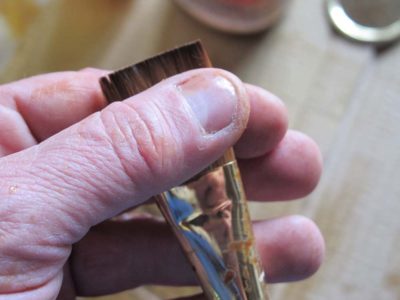
While the artist’s brush was still wet I pinched the bristles until they became aligned and flat, then left the brush to dry in that shape.

I included a video version of this process in my current PopWood video on Japanning. I haven’t seen it yet but am told by those who have that they like it.


Join the Conversation!